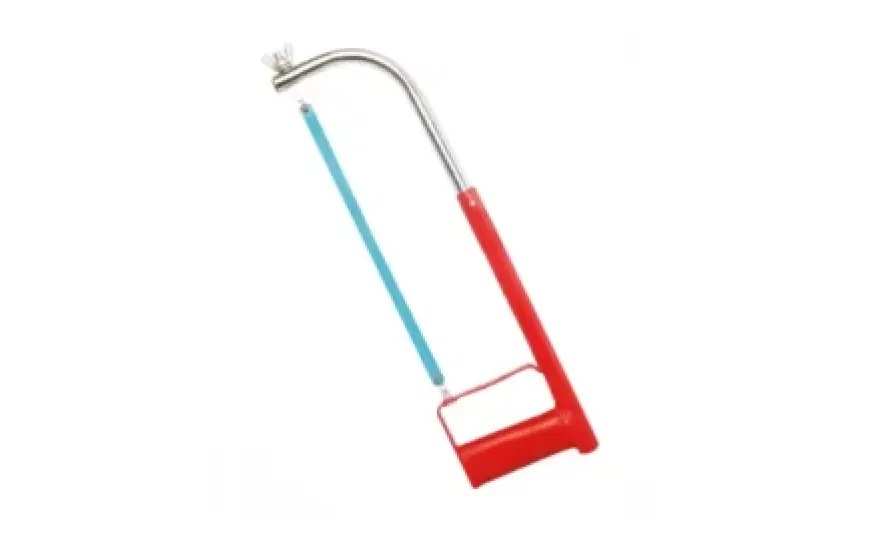Hacksaw Safety Tips Every DIYer Should Know

Whether you’re cutting metal pipes, trimming plastic, or shaping wood, hacksaws are one of the most versatile carpentry hand tools you can own. But like any cutting tool, they can be dangerous if used carelessly. From blade slippage to poor grip, simple mistakes can lead to injuries or ruined workpieces.
If you want to get clean, precise cuts and stay safe while working, these hacksaw safety tips will keep you on the right track.
1. Understand the Tool Before You Start
Before picking up a hacksaw, familiarize yourself with its design and types of hacksaws. There are fixed-frame hacksaws, adjustable-frame hacksaws, and compact mini-hacksaws, each suited for specific materials and spaces. Using the wrong type for the job can make cutting harder and more hazardous.
2. Choose the Right Blade
A sharp, undamaged hacksaw blade is essential for safe cutting. Always match the blade’s teeth-per-inch (TPI) to the material:
-
High TPI (18–32) for thin metals and plastics
-
Low TPI (14–18) for wood or thick metals
Check that the blade is properly tensioned — a loose blade can snap, while an overly tight one may warp.
3. Wear Proper Safety Gear
Even a simple cut can send shards of metal or plastic flying. Protect yourself with:
-
Safety glasses
-
Cut-resistant gloves
-
Closed-toe shoes
4. Secure the Workpiece
Never hold the material in your hand while cutting. Clamp it to a bench or in a vice to keep it steady. This not only prevents slips but also helps you make straighter cuts.
5. Use Correct Cutting Technique
-
Hold the hacksaw with both hands — one on the handle, one on the frame.
-
Apply steady forward strokes and ease up on the return stroke.
-
Don’t force the blade; let the teeth do the cutting.
6. Maintain Good Posture
Stand with your feet shoulder-width apart for balance. Keep your wrists straight to avoid strain, especially during longer cuts.
7. Store Hacksaws Safely
When not in use, store your hacksaw in a dry place with a blade guard on. This prevents accidental cuts and protects the blade from rust.
8. Regular Maintenance Matters
Check your hacksaw frame for cracks, clean it after each use, and replace worn blades promptly. Proper care extends the life of your tool and keeps it safe for future projects.
Conclusion
A hacksaw may be a simple hand tool, but using it without the right precautions can quickly turn a small job into a costly mistake. By understanding the tool, using proper technique, and keeping safety in mind, you’ll work more confidently and efficiently.
JCBL Hand Tools offers a wide range of durable, well-balanced hand tools and cutting solutions for DIYers and professionals alike. As a trusted hand tools supplier, we’re here to equip you with tools that help you get the job done safely and effectively.
What's Your Reaction?
 Like
0
Like
0
 Dislike
0
Dislike
0
 Love
0
Love
0
 Funny
0
Funny
0
 Angry
0
Angry
0
 Sad
0
Sad
0
 Wow
0
Wow
0

















































